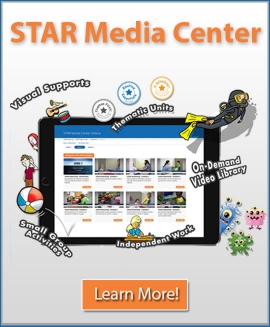Is it too Early to Plan for the Future?
Think about the students in your classroom. Have you identified the child who is destined to become an engineer, an accountant, or perhaps a jack-of-all trades? Every elementary school teacher has a story to tell about the student who can rattle off all departure and arrival times for a major transit line, or who can identify the kingdom and phylum of the most obscure animals. Their ability to learn and organize details is one of their many strengths, and one that can be of tremendous value to them as they move through compulsory education.
You probably don’t spend too much time thinking about the specifics of transition plans when you’re chasing around six year-olds, but it is never too early to plan. We know that our children with autism will eventually grow into adults with autism, and we want them all to be happy and successful in the community, even finding preferred, competitive employment (i.e., settings that pay at least the minimum wage). Unfortunately, the U.S Department of Labor (2017) offers bleak numbers on the employment of people with disabilities. Of the number of adults over the age of 16, people with disabilities make up about 20% of the work force, compared to 68% of people without disabilities. Wilcyznski, Trammell, and Clarke (2013) found that, surprisingly, adults with high functioning autism were unlikely to attain competitive employment. Additionally, only six to ten percent of adults with ASD are employed in competitive settings. So what can we do in the primary setting to help our future adult students?
We know that early and intensive intervention is one of the best ways to ensure better outcomes for children with autism (Cimera & Cowan, 2009). The good news is that the STAR Program incorporates multiple evidence-based strategies that will have your students well on their way to intensive intervention. The next time you teach a student to reject an unwanted item appropriately (PRT), or teach them how to ask important questions (DT), you are providing them with critical social and communication skills necessary for life in the workforce.
Lee and Carter (2012) offer a variety of suggestions for preparing students on the spectrum for work after graduation; one of which is using an individualized and strength-focused approach to teaching. If your students have an uncanny ability to learn rote facts, use it to expose them to a variety of topics, both in their areas of interest and beyond. Once you’ve captured their attention with fascinating facts, use their visual strengths to show them how those facts are interconnected to result in broader understanding of the topic. Individualize your teaching to include students’ preferences in their instruction. When you want to teach a student who loves animals how to ask for a label, use pictures of animals that they can’t readily name to help with motivation. The more we encourage our young ones to explore areas of interest, the more likely they will be to graduate with preferred interests as well as skills supporting engagement in those interests. Remember, it’s never too early to start planning for the future!
Click Here for examples of indepdendent work activities that might engage your students' interests
References
Cimera, R.E., & Cowan, R.J. (2009). The costs of services and employment outcomes achieved by adults with autism in the United States. Autism, 13, 285-302.
Lee, G.K., & Carter, E.W. (2012). Preparing transition-aged students with high functioning autism spectrum disorders for meaningful work. Psychology in the Schools, 49, 988-1000
Wilcyznski, S.M., Trammell, B., & Clarke, L.S. (2013). Improving employment outcomes among adolescents and adults on the autism spectrum. Psychology in the Schools, 50, 876-877.

